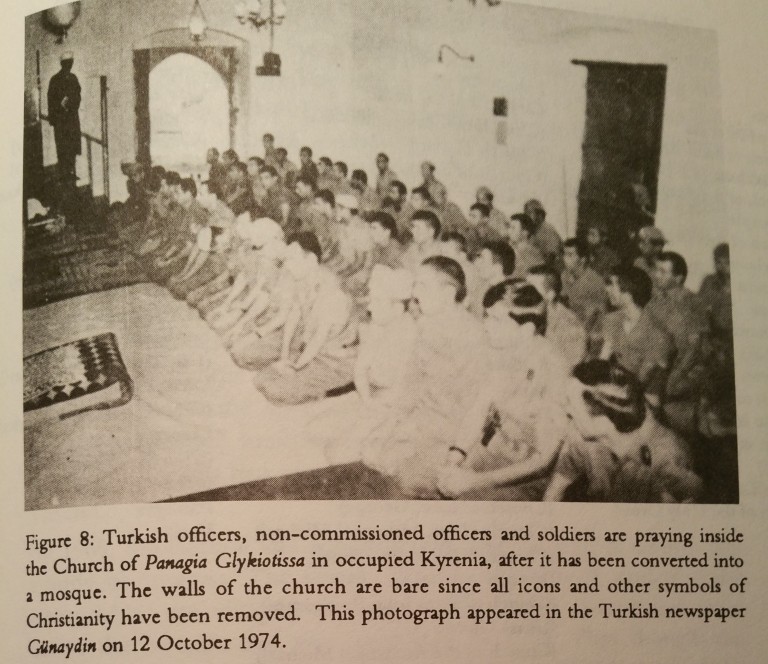It really does pay to scour through the decades-long historical record of (then supposed) “secular” Turkish state…
July 20, 1974 Flashback: “Secular” Turkey’s Brutal Jihad Conquest and Islamization of Northern Cyprus
Forty-two years ago today, July 20, 1974, the “secular” Turkish army, consistent with its Sharia-supremacist Ottoman ancestors, and their predatory 16th century jihad conquest of Cyprus [see Hill’s understated description of the 1571 capture of Famagusta: “The reader may be spared the description of the horrors which were such as usually occurred at the capture of any Christian city by the Turks,” but he does annotate a chronicler’s “dilations” on them, about “how his mother’s head was cut off; but what shocked him most, apparently, was that the Turks killed all the swine they found, and their carcasses were mingled with the human corpses” of their Christian victims; Sir George Hill, A History of Cyprus, 1948, Volume 3, p. 984], launched a jihad re-conquest of the island’s northern sections. By mid-August the invading modern Turkish army jihadists occupied 38% of the island, affecting a de facto partition of Cyprus, and engaging in overt re-Islamization efforts thoroughly inconsistent with the delusive, counterfactual trope that Turkey’s military was (and remains), somehow, an agent of “secularization.”
Northern Cyprus’ 1974 Islamization began immediately upon the Turkish army’s occupation, as described from primary (and triumphal) Turkish media sources compiled by Professor Christos P. Ioannides (“In Turkey’s Image” [1991], pp. 177ff):
One of the army’s first gestures was to convert the Church of Panagia Glykiotissa (Church of the Virgin Mary, Healer of Pain) in Kyrenia into a mosque so that the troops who had landed at a nearby beach during the invasion could pray (see washed out images, below, from a celebratory account in the Turkish newspaper, Günaydin, published October 12, 1974). There were two mosques in Kyrenia where these troops could have prayed. But this church was apparently converted into a mosque at that time for the following reasons: First, from the Turkish [my note: i.e., Islamic] point of view, the conversions symbolized the victory of the Turkish armed forces over the “unbelievers”—the Christian Greeks. Second, it signified the beginning of the Islamization process which subsequently took place throughout the newly occupied territory as church after church was converted into a mosque.
Ioannides further cites the clear Islamic religious rationale provided for these actions by a “prominent Islamic (religious) figure in Istanbul, Mufti A. Seref,” whose statement “was published in the Turkish press next to a picture of officers and soldiers praying in the Church of Panagia Glykiotissa after it had been converted into a mosque” (in the same October 12, 1974 Günaydin article). The good Mufti Seref proudly declared:
According to our religion (Islam), if needed, prayers can be held in a church but only under this condition: It is imperative that in the church there should be no religious objects of the infidels (Christians) or these objects should be covered. There should be nothing overhead that has any relationship with these objects. Then prayer can take place.

